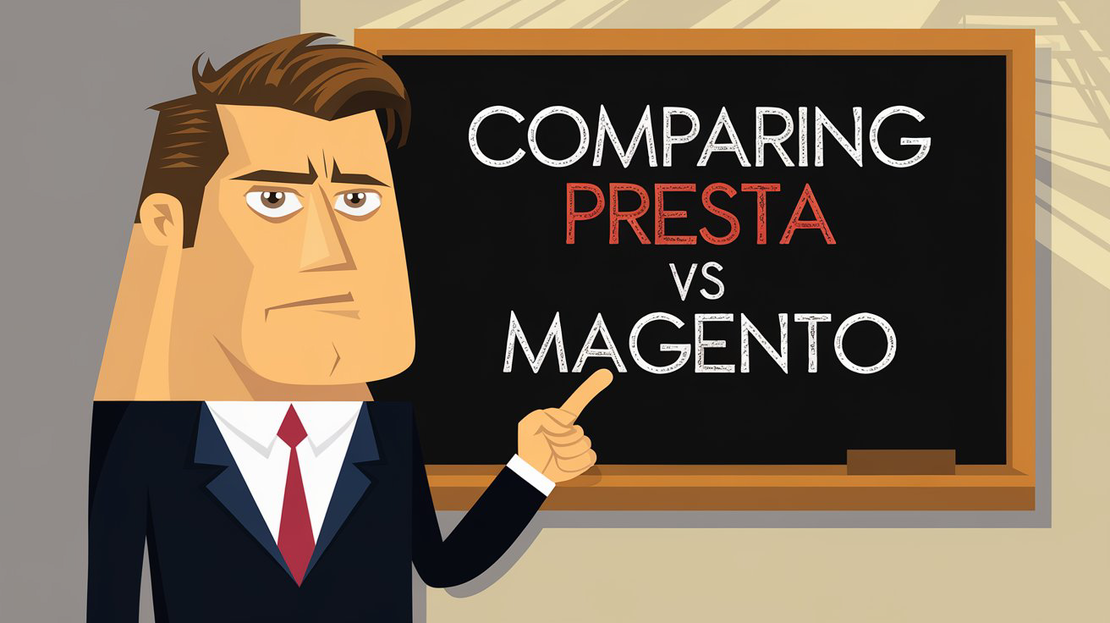
2025 Magento Security Guide: Key E-commerce Manager Insights
- Piotr Wilniak
- Magento 2 , Security , E commerce
- December 6, 2024
Table of Contents
E-commerce security is critical for the success of any online store, especially with the rise of sophisticated attacks by cybercriminals. This comprehensive guide outlines what every e-commerce manager must know to secure their Magento installation in 2025. From setting strong passwords to securing third-party extensions, the article explores all aspects of Magento security. Discover how to monitor your site for suspicious activity and respond effectively to potential breaches. Implementing these essential practices will not only protect sensitive customer information but also enhance your brand’s reputation and customer trust.
Understanding E-Commerce Security: Navigating the Threat Landscape
In today’s digital marketplace, e-commerce leaders are constantly facing a barrage of cybersecurity threats.
In 2021, a shocking 43% of small businesses reported hacking attempts, highlighting the urgent need for ongoing vigilance. This statistic not only shows how common cyber threats are but also points to the vulnerability of smaller businesses, which are often seen as easier targets. To reduce these risks, it’s essential to implement strong security measures, including:
- Multi-factor authentication
- Regular software updates
Additionally, the stark reality is that 15% of organizations had to shut down due to cyberattacks. This troubling figure is a wake-up call, stressing how crucial it is to have a solid defense strategy. Companies should also think about investing in thorough cybersecurity training for their employees, as human error can often lead to breaches.
By tackling these challenges head-on, e-commerce businesses can safeguard their assets, keep customer trust intact, and secure long-term success in a competitive environment.
Strengthening Access: Best Practices for Passwords and User Authentication
One of the best ways to boost your e-commerce site’s security is by using strong, unique passwords. Combining letters, numbers, and special characters can significantly lower the chance of unauthorized access to your Magento site. For example, a password like “E-commerce!2023” is much safer than a simple “password123.” Encourage your team to use password managers to create and store strong passwords, making sure each account has its own unique combination.
Regularly updating security patches, such as SUPEE-5994, is also essential for protecting against vulnerabilities. These patches tackle known security issues and help secure your APIs, which are often targeted by cybercriminals. Failing to apply these updates can leave your site open to attacks that exploit outdated software. To strengthen your defenses and maintain operational integrity, consider creating a routine for:
- Checking for updates
- Applying security patches
This will ultimately help preserve customer trust and enhance your business’s reputation.
Evaluating Third-Party Extensions for Security Risks
More than half of Magento stores depend on third-party extensions, which unfortunately makes them prime targets for cybercriminals. These extensions can create vulnerabilities that hackers are eager to exploit.
Regularly auditing these plugins is a smart way to cut security risks by up to 40%. By taking the time to evaluate the extensions your store uses, you can pinpoint outdated or poorly maintained plugins that might jeopardize your security.
For example, if a widely-used payment gateway extension hasn’t been updated in months, it could be missing important security patches. A strong review process not only reduces risks but also boosts customer trust in your brand’s commitment to protecting their data. The stakes are high, so staying vigilant is essential for a secure e-commerce environment.
Proactive Detection: Tools and Techniques for Monitoring Suspicious Activity
Setting up a Report URI is a smart move to boost your e-commerce security. It helps you catch Content Security Policy (CSP) violations, making it easier to spot unauthorized actions on your site. This early detection system sends you real-time alerts when it senses anything suspicious, so you can jump into action before any harm is done. For instance, if an unauthorized script tries to load, you’ll get an instant notification, allowing you to respond quickly.
Regular monitoring is also key to keeping your e-commerce site safe. By continuously analyzing site activity, you can identify unusual patterns that might signal a breach early on. This proactive approach can save you from costly incidents, which, according to industry reports, can average around $200,000 (USD) per breach for small businesses. For example, if you notice:
- Unusual spikes in traffic
- Access attempts from unfamiliar IP addresses
you can dig deeper to address potential threats before they escalate. By focusing on these proactive strategies, you not only protect your assets but also build customer trust, helping your business stay strong in a tough environment.
Crafting a Robust Incident Response Plan for E-commerce Success
A well-crafted incident response plan is essential for any e-commerce business, playing a crucial role in recovery efforts during a breach. Studies show that companies with a clear plan can cut their average recovery time from 280 days down to just 73 days. This significant reduction not only minimizes downtime but also helps preserve customer trust and ensure business continuity when things get tough.
Simulating breach scenarios is another important step that can boost response effectiveness by more than 30%. By regularly running these drills, teams become more prepared for real crises, leading to quicker and more coordinated responses. For example, if a phishing attack occurs, having a practiced response could turn a potential disaster into just a minor hiccup.
In a world where every second matters, these strategies not only strengthen your e-commerce site’s defenses but also promote a culture of security awareness within your organization. This proactive attitude is crucial for thriving in the face of ever-changing cyber threats.
Summary
As e-commerce continues to evolve, the urgency for robust security measures cannot be overstated. With 43% of small businesses facing hacking attempts in 2021, the implications for security are profound—especially for those relying on platforms like Magento. The staggering statistic that 15% of businesses shut down post-cyberattack raises critical questions: What are the long-term impacts of neglecting cybersecurity?
Implementing multi-factor authentication and conducting regular audits of third-party extensions can significantly mitigate risks. Yet, the emphasis should also be on fostering a culture of cybersecurity awareness through employee training and incident response simulations. How prepared is your team to handle breaches?
Moreover, establishing a Report URI can serve as an early warning system, allowing for swift action against potential threats. As we navigate this complex landscape, the challenge lies not just in safeguarding assets, but in preserving customer trust and ensuring operational integrity. Are we proactive enough in our security strategies to thrive amid these challenges?


